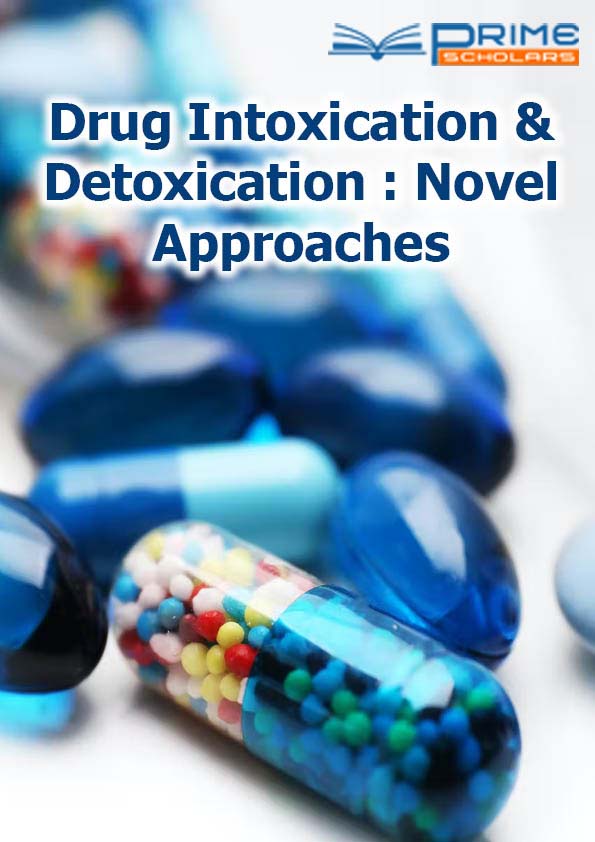Short Communication - (2022) Volume 3, Issue 5
Ethanol Inebriation Related Metabolic and Biochemical Aggravations in Youth
Damla Pinar*
Department of Medicine, Hacettepe University, Turkey
*Correspondence:
Damla Pinar,
Department of Medicine, Hacettepe University,
Turkey,
Email:
Received: 30-Nov-2022, Manuscript No. DIDNA-22-15307;
Editor assigned: 02-Dec-2022, Pre QC No. DIDNA-22-15307 (PQ);
Reviewed: 16-Dec-2022, QC No. DIDNA-22-15307;
Revised: 21-Dec-2022, Manuscript No. DIDNA-22-15307 (R);
Published:
28-Dec-2022, DOI: 10.36648/DIDNA 3.5.25
INTRODUCTION
This study summarizes the experience of acute ethanol intoxication in adolescent patients in a tertiary reference commu- nity in turkey and examines the results of the AEI in the study center compared with age and sex-matched controls. Here, we demonstrated the relationship between metabolic and biochemical disorders associated with AEI in teenagers and serum ethanol levels. In recent years, the frequency of pediatric emergency room visits due to acute ethanol poisoning has increased worldwide.
Description
A similar pattern of growth has been seen in recent years. Most ED visits for AEI took place on weekends as usual. Although Jung somewhat dominated the review population and the mean age of patients was similar to other studies, it is worrying that 5% patients were younger than 14 years. The decline in the AEI group was more gradual than in the control group. Furthermore, hypothermia and nausea or pinching was more common in the AEI bundle. These findings were consistent with previous literature. In any event, the injuries and suicide attempts associated with the AEI bundle were less consecutive in testing. Describing the differences between addiction excluding illicit drugs and non-AEI-related injuries in a bench- mark group may underlie this distinction and address the de terminants i.e., self-destruction and injury-related injuries. Cases were routinely tested for ethanol levels by Characteristic measurable medication assessments. Hyperlactatemia and mild acidosis are very common components of AEI. A current review showed that AEI patients had lower blood pH levels and higher lactate levels compared to the benchmark group. On the other hand, PCO2 and bicarbonate levels were within nor- mal limits and comparable between the two assemblies. More metabolic acidosis was found than respiratory acidosis. That study included transcendental respiratory acidosis in AEI cases.
Elevated lactate levels or possible lactic acidosis are routinely seen in patients, a typical finding previously noted by others. Moreover, his lactate levels above 5 mmol/L, recently associated with increased mortality in AEI patients, were more normal in the control group 5.2%, p=0.001. However, there were no mortality or severe effects related to basal lactate levels in our series, and a positive association with lactate levels. Various previous studies have also shown similar results. Upon ethanol digestion, oxidation of acetaldehyde to acetate increases the NADH or NAD fraction within mitochondria representing both ketoacidosis and lactic acidosis in AEI. In addition, hypo-perfusion and tissue hypoxia due to regulation of venous tone are contingent on ethanol-induced local sensory system weakness and, together with hypothermia, can lead to lactic acidosis [1-4].
Conclusion
Additionally, the consequences of damage from other drugs that can cause lactic acidosis, such as acetaminophen, carbon monoxide, methanol, or ethylene glycol, are more severe during puberty. Over time, other toxicities became more normal in the benchmark group, but the lactate burn score was higher in the AEI group, suggesting that hyperlactatemia is almost certainly associated with ethanol intoxication. Neither hyperglycemia nor hypoglycemia occurred in the test population. Hypoglycemia, although rare, was more normal in the AEI group. Some more empirical studies show mild hypoglycemia in adolescents attributed to low glycogen.
Acknowledgement
None.
Conflict of Interest
The author’s declared that they have no conflict of interest.
References
- White M C (2022) Inflammation suppresses patients' ability to metabolize cytochrome P450 substrate drugs psychopharmacology. Ann Pharmacother 56(7): 809-819.
[Crossref] [Google Scholar]
- Martcheva M (2022) Immuno-epidemiological co-affection model of HIV infection and opioid addiction. Math Biosci Eng 19(4): 3636-3672.
[Crossref] [Google Scholar]
- Bute JJ (2022) Exploring internal medicine interns' educational experiences on opioid addiction: A narrative analysis. Health Commun 38(1):169-176.
[Crossref] [Google Scholar]
- Downer K (2022) Procedural moderate sedation in patients with opioid addiction and chronic pain: A practical primer for the radiologist. Abdom Radiol (NY) 47(8):2717-2720.
[Crossref] [Google Scholar]
Citation: Pinar D (2022) Ethanol Inebriation Related Metabolic and Biochemical Aggravations in Youth. Drug Intox Detox: Novel Approaches. 3:25.
Copyright: © 2022 Pinar D. This is an open-access article distributed under the terms of the Creative Commons Attribution Li- cense, which permits unrestricted use, distribution, and reproduction in any medium, provided the original author and source are credited.
